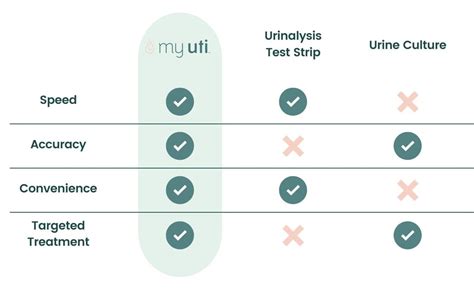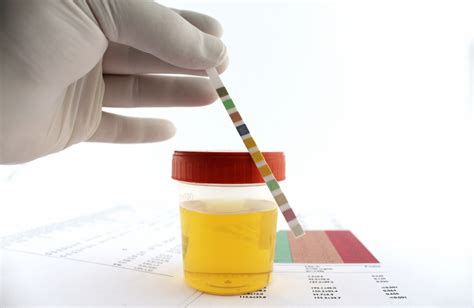Intro
Discover 5 ways to test for UTI, including urine tests, physical exams, and imaging tests, to diagnose and treat urinary tract infections effectively, relieving symptoms like burning sensation, frequent urination, and abdominal pain.
Urinary tract infections, commonly referred to as UTIs, are bacterial infections that occur in any part of the urinary system, including the kidneys, ureters, bladder, and urethra. These infections are typically caused by bacteria, with Escherichia coli (E. coli) being the most common culprit, responsible for the majority of cases. UTIs can be extremely uncomfortable and, if left untreated, can lead to more serious health issues. Therefore, diagnosing and treating UTIs promptly is crucial. There are several methods to test for UTIs, each with its own set of advantages and specific application scenarios.
The importance of accurate and timely diagnosis cannot be overstated. UTIs can affect anyone, regardless of age or gender, though certain demographics, such as sexually active women, are at a higher risk. The symptoms of a UTI can range from mild to severe and include burning sensations during urination, frequent urination, abdominal pain, and in some cases, blood in the urine. Given the potential for complications, such as kidney damage, and the discomfort caused by UTIs, it's essential to understand the various testing methods available.
Testing for UTIs is a critical step in confirming the presence of an infection and guiding the treatment plan. Healthcare providers typically employ a combination of physical examination, medical history review, and specific diagnostic tests to confirm a UTI. The choice of test depends on several factors, including the severity of symptoms, patient history, and the healthcare provider's suspicion of complications. Understanding the different testing methods can empower individuals to seek appropriate medical care when symptoms arise.
Understanding UTI Testing Methods

UTI testing methods are designed to identify the presence of bacteria in the urine, determine the type of bacteria causing the infection, and assess the severity of the infection. The primary testing methods include urinalysis, urine culture, and in some cases, imaging studies. Each of these tests provides valuable information that helps healthcare providers diagnose UTIs accurately and develop effective treatment plans.
Urinalysis
Urinalysis, or urine testing, is the most common method used to diagnose UTIs. This test involves analyzing a urine sample for various components, including bacteria, blood, protein, and other substances that may indicate an infection. A urinalysis can be performed in a healthcare provider's office and provides rapid results. The test can detect the presence of nitrites, leukocyte esterase, and blood in the urine, all of which can be indicative of a UTI.Urine Culture Test

A urine culture test is used to identify the specific type of bacteria causing the UTI. This test involves sending a urine sample to a laboratory where it is placed in a special medium that encourages the growth of bacteria. After a couple of days, the laboratory can identify the type of bacteria present and determine which antibiotics the bacteria are susceptible to. This information is crucial for guiding the treatment of UTIs, especially in cases where the infection is caused by bacteria that are resistant to certain antibiotics.
Imaging Studies
In some cases, healthcare providers may recommend imaging studies, such as ultrasound, CT scan, or MRI, to assess the urinary tract for any abnormalities that could be contributing to the UTI. These studies are particularly useful in patients who experience recurrent UTIs, have a history of urinary tract abnormalities, or are suspected of having complications such as kidney stones or an obstructed urinary tract.Physical Examination and Medical History

A physical examination and review of the patient's medical history are essential components of UTI diagnosis. During the physical examination, the healthcare provider may perform a pelvic exam in women or a rectal exam in men to check for tenderness in the area of the bladder or prostate. The medical history review helps to identify risk factors for UTIs, such as previous UTIs, diabetes, or the use of certain types of birth control.
Risk Factors and Prevention
Understanding the risk factors for UTIs can help individuals take preventive measures. For example, drinking plenty of water to stay hydrated, urinating when the need arises rather than delaying, and practicing good hygiene, such as wiping from front to back after using the bathroom, can reduce the risk of developing a UTI. In some cases, healthcare providers may recommend preventive antibiotics for individuals who experience recurrent UTIs.Diagnosis and Treatment

The diagnosis of a UTI is typically made based on the combination of symptoms, physical examination findings, and the results of urinalysis and urine culture. Once a UTI is diagnosed, treatment usually involves a course of antibiotics tailored to the specific type of bacteria causing the infection. It's crucial to complete the full course of antibiotics as prescribed, even if symptoms improve before finishing the medication, to ensure that the infection is fully cleared.
Complications and Recurrence
If left untreated or not treated properly, UTIs can lead to complications such as kidney damage or sepsis, a potentially life-threatening condition. Recurrent UTIs can be a significant issue for some individuals, requiring long-term management strategies, including preventive antibiotics or self-care measures to reduce the risk of future infections.Self-Care and Lifestyle Modifications

In addition to medical treatment, certain self-care and lifestyle modifications can help alleviate UTI symptoms and prevent future occurrences. These include staying hydrated, avoiding irritants such as spicy or acidic foods, and considering the use of cranberry juice or supplements, though the effectiveness of these for UTI prevention is still a topic of debate.
When to Seek Medical Attention
It's essential to seek medical attention if symptoms of a UTI occur, especially if they are severe, include blood in the urine, or if there are signs of a more serious infection, such as fever, chills, or flank pain. Prompt medical evaluation and treatment can prevent complications and improve outcomes.Conclusion and Next Steps

In conclusion, testing for UTIs is a critical process that involves a combination of physical examination, medical history review, and specific diagnostic tests. Understanding the different testing methods and the importance of prompt treatment can empower individuals to seek medical care when needed and take preventive measures to reduce the risk of UTIs. By staying informed and proactive, individuals can effectively manage UTIs and maintain their urinary health.
We invite you to share your thoughts or experiences with UTIs in the comments below. If you found this article informative, please consider sharing it with others who might benefit from this information. Your engagement and feedback are invaluable in helping us provide the most relevant and helpful content.
What are the common symptoms of a UTI?
+Common symptoms of a UTI include burning sensations during urination, frequent urination, abdominal pain, and in some cases, blood in the urine.
How are UTIs typically treated?
+UTIs are typically treated with a course of antibiotics tailored to the specific type of bacteria causing the infection. Completing the full course of antibiotics as prescribed is crucial to ensure the infection is fully cleared.
Can UTIs be prevented?
+Yes, certain measures can help prevent UTIs, including drinking plenty of water, urinating when the need arises, practicing good hygiene, and in some cases, using preventive antibiotics.
